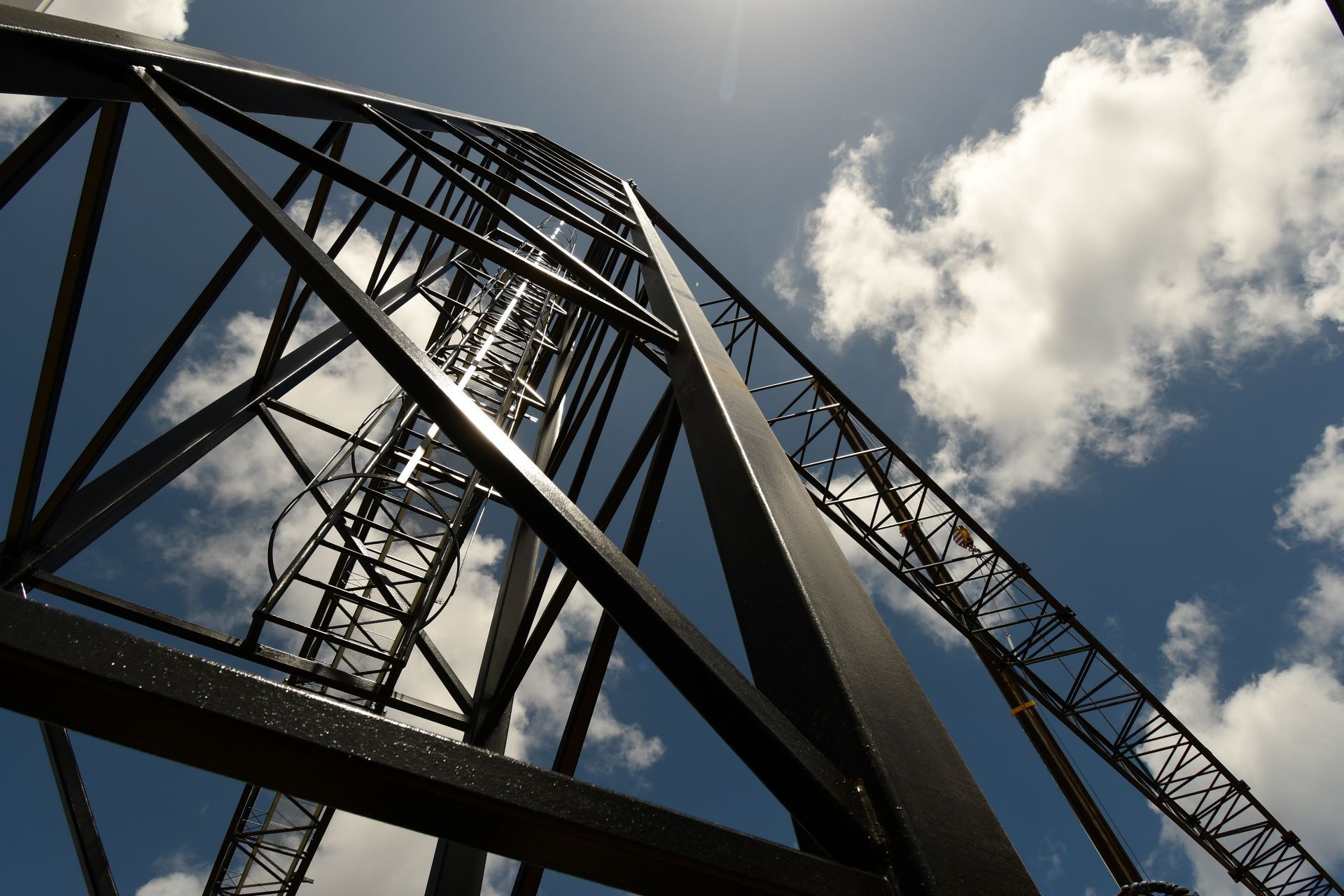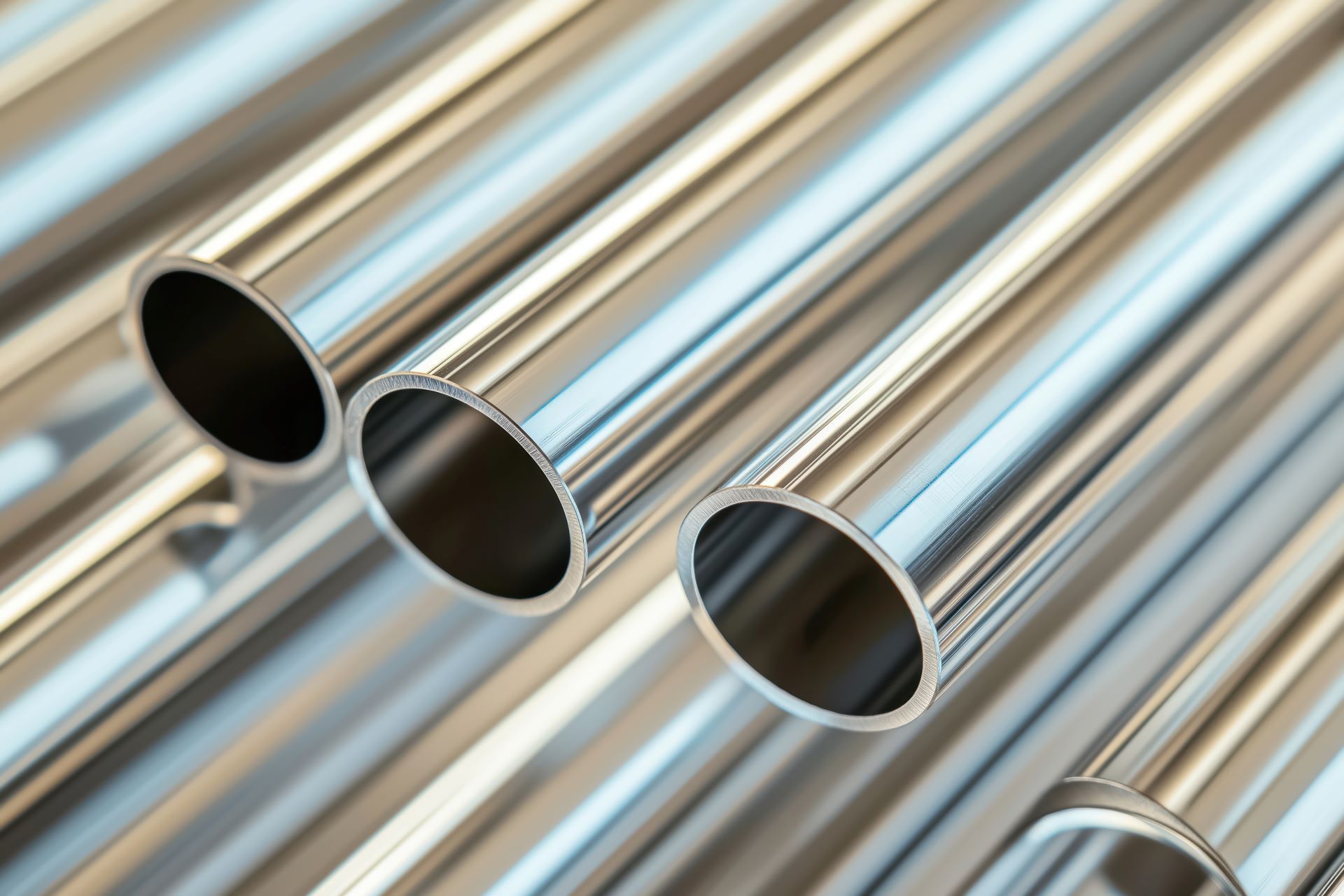Stainless Steel Pipe vs Tubing: How to Choose the Right Fit
When specifying stainless steel for your project, knowing the difference between pipe and tubing is more than a matter of terminology. These products serve very different purposes and selecting the wrong one can lead to cost overruns, compliance issues, or performance failures. At Action Stainless, we supply and process both stainless steel pipe and tube in a wide range of sizes and grades. This guide breaks down the key differences, applications, and decision factors to help you choose the best fit.
What Is the Difference Between Stainless Steel Pipe and Tube?
The fundamental difference comes down to how each product is measured and what it is designed to do. Stainless steel pipe is engineered for transporting fluids or gases and is measured by its internal diameter (ID). This internal measurement is key for determining flow capacity and ensuring the system can handle specific volumes or pressure requirements.
Stainless steel tubing, on the other hand, is built for structural integrity, precise dimensions, and visual appeal. Tubing is measured by its outside diameter (OD), which helps maintain consistency in applications like architectural railings, medical equipment, and precision-machined frames. Tubing also has tighter tolerances, making it the preferred option when precision and appearance matter.
Pipe vs. Tube: Sizing and Tolerances
The sizing standards differ significantly between pipe and tube. Stainless steel pipe follows Nominal Pipe Size (NPS), which refers to approximate interior diameter and uses schedule numbers to designate wall thickness (e.g., Schedule 10, Schedule 40). These schedules are used to rate pressure capacity and mechanical strength.
Tubing is specified with its actual outside diameter and wall thickness, expressed in decimals or gauge. Because of this, tubing provides much more accurate and consistent sizing. This is especially critical in industries like food processing and manufacturing, where consistency and fit are essential.
Tolerances also differ. Pipe is produced with broader tolerances, acceptable in most fluid-handling systems. Tubing must meet stricter dimensional tolerances to ensure repeatability in fabrication, welding, or assembly.
Side-by-Side Comparison
| Feature | Stainless Steel Pipe | Stainless Steel Tube |
|---|---|---|
| Sizing Standard | Nominal Pipe Size (NPS) | Exact Outside Diameter (OD) |
| Primary Use | Transporting fluids/gases | Structural, decorative, sanitary |
| Wall Thickness Format | Schedule (e.g., Sch 10, 40) | Decimal/inch measurement |
| Tolerance | Standard | Tight and precise |
| Finish/Aesthetics | Functional | Often polished |
| Strength Focus | Pressure handling | Fit, form, and consistency |
Common Use Cases: When to Use Pipe vs Tube
Pipe Applications
Stainless steel pipe is commonly used in:
- Water and wastewater systems
- Chemical processing
- Oil and gas transmission
- Sanitary fluid transfer
- Industrial process piping
Its ability to handle internal pressure and chemical exposure makes it ideal for fluid systems across industries.
Tube Applications
Stainless steel tubing is commonly used in:
- Architectural railings and handrails
- Sanitary food and beverage systems
- Heat exchangers and condensers
- OEM components and structural framing
Tubing is the preferred material when finish, strength-to-weight efficiency, and visual quality are a priority.
Performance Considerations in Industrial Applications
At Action Stainless, our tubing inventory is stocked to support high-precision fabrication across food processing, marine, and pharmaceutical manufacturing. These sectors demand both dimensional reliability and superior surface finish.
For higher-pressure applications such as pump systems, refinery piping, or wastewater transfer, stainless pipe is the clear choice. We offer pipe in both welded and seamless formats, in grades such as 304, 304L, and 316L.
Fabrication and Processing Capabilities
Choosing the right product is only part of the equation: how it’s cut, formed, or processed impacts your timeline and performance.
Action Stainless offers full in-house processing, including:
- Saw Cutting: Up to 17” OD and 22-foot lengths
- Laser and Waterjet Cutting: Ideal for tight-tolerance tubing
- Plasma Cutting: Best for larger pipe applications
- Polishing and Finishing: For sanitary and architectural tubing
Our experienced fabrication team works from CAD files or custom specs to deliver precision-ready material.
Material Grades and In-Stock Standards
Action Stainless offers a deep inventory of stainless pipe and tube in both welded and seamless forms. While our product offerings vary by region and stock availability, key grades include:
- 304 / 304L – For structural, chemical, and industrial use
- 316 / 316L
– For higher corrosion resistance, especially in food, marine, and sanitary environments
We follow sizing and schedule specifications that align with common industry use, and all materials include mill test reports (MTRs) for traceability.
Please refer to our
Product Page for full availability.
Visual and Surface Differences
- Pipe typically has a matte or mill finish and may include a visible seam (in welded options).
- Tubing often includes polished or bright finishes to support sanitary systems, visual display, or clean-room environments.
We stock a wide selection of both
mill finish and polished finish tubing to meet your specific requirements.
Avoiding Misapplications
Using tubing where pipe is needed can lead to pressure failure. Using pipe when precision is required can result in poor fit or increased fabrication costs.
Cost Considerations
- Tubing tends to be more expensive due to tight tolerances and finishing.
- Pipe is more affordable for high-volume fluid transport applications.
Industries Served
Action Stainless serves a broad customer base that relies on high-quality pipe and tube:
- Water & Wastewater Facilities
- Food & Beverage Processing
- Oil & Gas and Chemical Plants
- Marine and Coastal Infrastructure
- Fabrication and Machine Shops
- Architectural Designers
- OEM Equipment Manufacturers
We help ensure you get the right cut, finish, and grade to meet your industry’s standards.
Need Help Selecting the Right Stainless Steel Pipe or Tube?
At Action Stainless, we go beyond supplying metal, we provide expertise. With decades of experience, in-house processing, and a comprehensive inventory, we deliver stainless solutions that meet your project’s performance, precision, and timing requirements.
Contact your Action Stainless representative to discuss project specs, request a quote, or get guidance on pipe vs. tubing selection. Explore our inventory online or
download the Action Stainless Line Card for more details.






